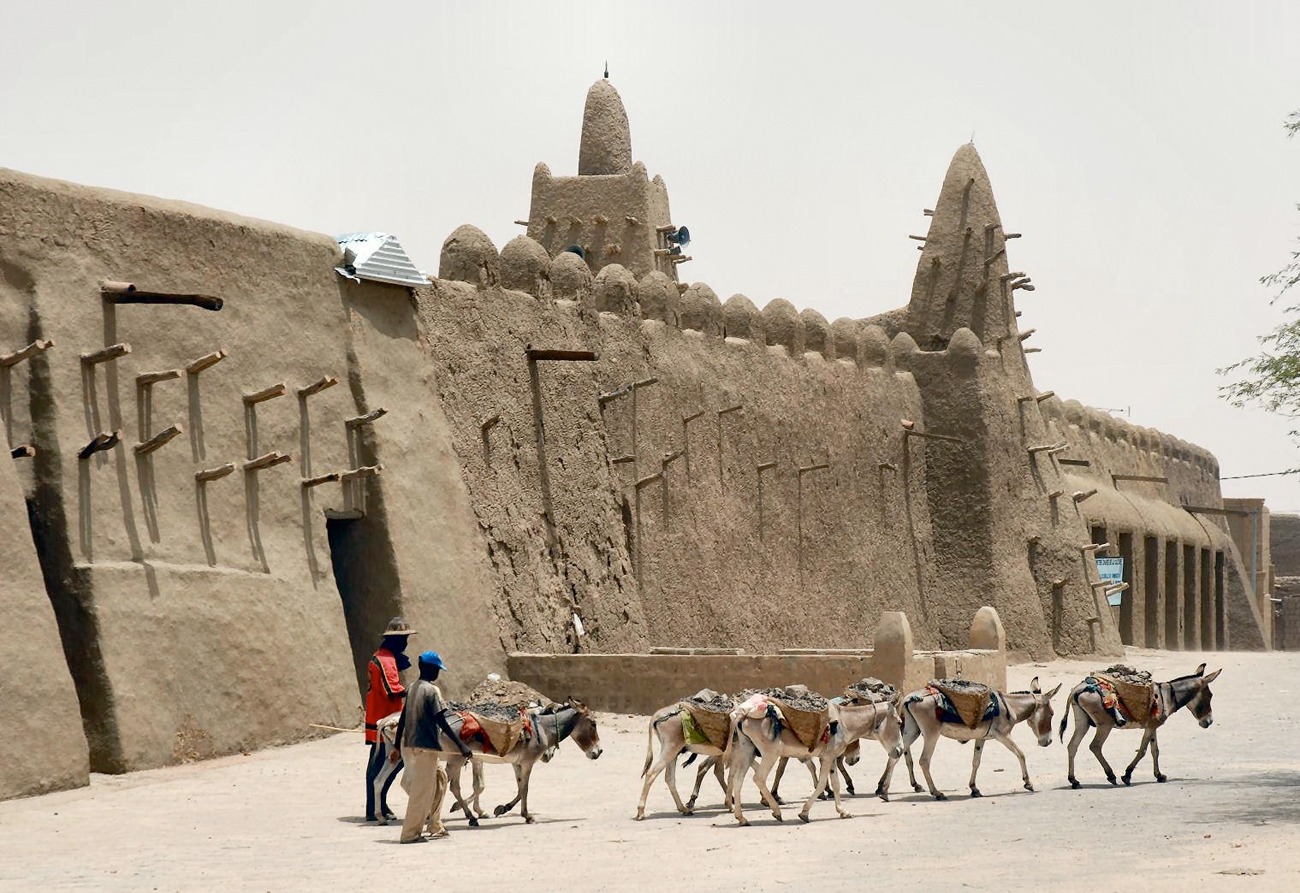First published by ISS Today
It was late summer 2019 when Bourama (not his real name) answered his phone. He was near Mopti, in central Mali, he told us and was in the midst of illegally excavating one of Mali’s thousands of archaeological sites.
The site that he and his team of three workmen were excavating had so far mostly yielded ancient stone beads, which he estimated to date back to the palaeolithic era. These are often found at spots in this region, particularly ancient burial grounds. Reminiscing about a previous excavation, he described how “we opened the tombs and found cadavers wearing the beads. They had them on their necks, their waists, and their wrists.”
He has unearthed everything from bronze jewellery to urns and statues. Other looters he knows have dug up the famed Djenné terracottas. These are unique to Mali and one of the most ancient forms of figurative art in Africa.
Unexcavated artefacts in Mali are legally the property of the state. Removing them from their original context, or exporting them, is unlawful according to standard legal frameworks in archaeological source countries.
These laws aim to preserve antiquities in their original context. Without such context, it is difficult to understand these objects’ meaning and importance in ancient cultures. As Bourama describes, the looters’ methods are hardly the painstaking research of a professional archaeologist. “I have more freedom, because the people I employ just come with pickaxes and shovels and dig, so I have lots of freedom.”
While Bourama claims he excavates only for his own personal collection, there are many other dealers in Mopti and around other key archaeologically rich areas, such as Gao, Djenné and Timbuktu, who exploit this trade for profit. Regional middlemen for antiquities dealers based in the capital have pillaged the sites in these regions for decades. They command and finance large, organised teams of looters to excavate sites.
Looting has surged since the outbreak of conflict in Mali. Rising economic hardship and the breakdown of state structures have meant new groups of raiders have flooded the market, increasing demand for the services of regional intermediaries.
Almost no sites have escaped unscathed. Representatives from cultural institutions and archaeologists estimate that between 80% and 90% of locations in key regions have been plundered. Recent looting has exacerbated the damage caused by decades of illicit excavations.
The black market in Malian antiquities has historically been concentrated in Bamako. From the late 1990s to 2012-2013, dealers based in the capital sold objects to wealthy European collectors that had been excavated by looting networks. A new ENACT organised crime study found that recent years of conflict have radically reshaped Bamako’s antiquities market. A small number of powerful, well-connected dealers reportedly continue to supply artefacts to clients overseas.
Research in North Africa has found that online groups are now playing a vital role in antiquities trafficking. Social media platforms, particularly Facebook, play host to these groups. Looters on the ground, at remote sites and in conflict zones, connect online with potential buyers around the world. The monitoring of this criminal activity is poor and antiquities crime isn’t a priority for those enforcing social media guidelines.
Mali’s cultural institutions – the Directorate Nationale du Patrimoine Culturel, the National Museum of Mali and the Ministry of Culture – undertake missions to protect archaeological sites even in the active conflict zones. Despite their efforts, objects continue to be smuggled out over Mali’s land borders and by air from the capital.
Dealers in Bamako told the ENACT research team that Malian artefacts, in particular the highly prized Djenné terracottas, continue to disappear primarily to European markets. The legacy of colonial-era collections of looted African art continues to shape the international art market.
The terracottas feature on the Red List of cultural objects at risk published by the International Council of Museums. The Red List provides an international alert of types of cultural heritage that are likely to have been looted.
Archaeologists and provenance researchers argue that looted artefacts continue to circulate on antiquities markets with impunity. In their view, collectors and dealers don’t do enough to ensure due diligence on the objects they sell. The counter-argument by Western-based professional associations of art dealers is that ever-increasing regulations throttle their business. Meanwhile, the informal online trade in antiquities continues apace; much of it, reportedly, either looted or fake.
The illegal trade in African cultural heritage continues to cause untold damage to archaeological sites and monuments. Mali is a standout case study of how this illicit business is draining the continent of its collective history. DM
Julia Stanyard, Analyst, Global Initiative Against Transnational Organized Crime
This article was first published by the ENACT project. ENACT is funded by the European Union (EU). The contents of this article are the sole responsibility of the author and can under no circumstances be regarded as reflecting the position of the EU.
This article is more than 4 years old
Africa
Inside the illegal trade in West Africa’s cultural heritage
Regional middlemen for antiquities dealers run and finance large, organised teams of looters to excavate sites.




